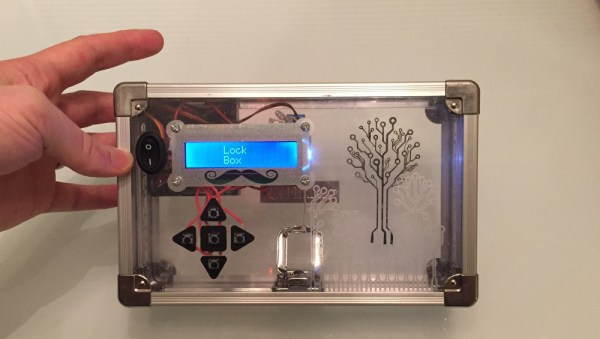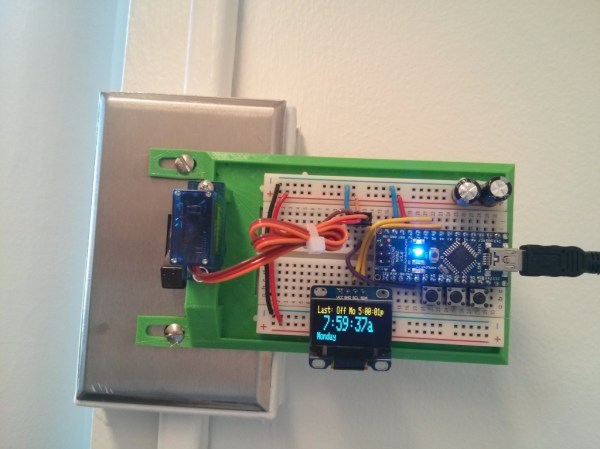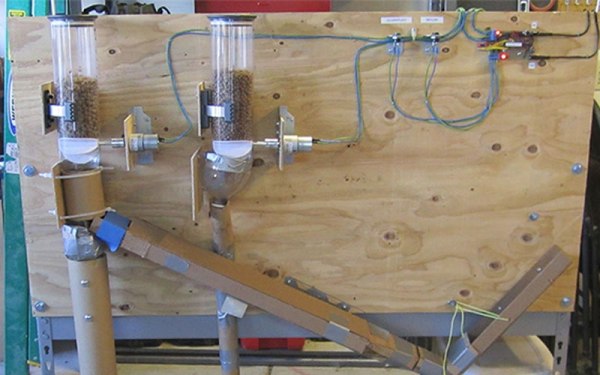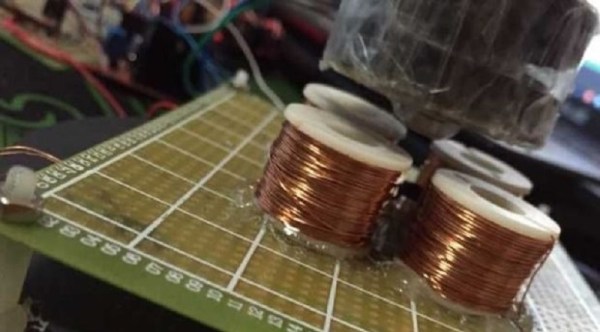Any hardware hacker will tell you, a significant other who embraces your passion is a keeper. [Nathan] found a keeper in [Jessica] – they even worked together on a hardware hack for their own wedding. The couple wanted an interactive element for their guests. Disposable cameras are getting a bit hard to find these days, so the solution was a trivia powered lock box designed and built by [Nathan] himself. Guests arrived at their tables to find locked boxes and cards with trivia questions about the couple. Only by answering the questions correctly would they unlock the box to access the prizes inside.
Each box consists of a Really Bare Bones Board, which is essentially an ATmega328 breakout board. The user interface consists of five tactile switches and a 16×2 character based LCD. The box is a clear Vaultz pencil box (Yes, the same brand Ahmed used for his clock). The final element is of course the locking mechanism. One of [Nathan’s] friends noticed that the Vaultz box latch was riveted in, and was spring loaded. It only took a bit of work to flip the latch from the outside to the inside. Cheap 9g micro servos from the far east pull the latch open with a string. The only thing we haven’t figured out is how [Nathan] closed the latches while they were inside the box. Obviously some black magic was involved! [Jessica] decorated the box with circuit traces created on her vinyl cutter.
On the eve of the big day, [Nathan] realized that his tactile switches were… not really switching. The superglue he had used to mount them had seeped into the switch body, freezing it solid. Nathan saved the project with a herculean effort of soldering 5 switches on each of 12 boxes the night before his own wedding.
What was in the box? Alka-Seltzer tablets. When added to vases filled with oil and water, the fizzy tablets turned the vases into mini lava lamps. The boxes also contained coins which were redeemable for Hawaiian Leis.
Click past the break to see the boxes in action on [Nathan] and [Jessica’s] big day and if you’re looking to build a fleet of hardware for your own wedding, take a look at the centerpieces [Bill Porter] created a couple of years ago.
Continue reading “Trivia Lock Box Spices Up Wedding Reception”















